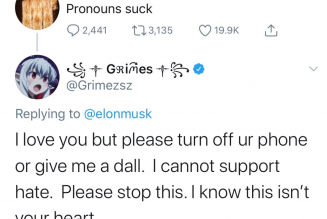MBW’s Stat Of The Week is a series in which we highlight a single data point that deserves the attention of the global music industry. Stat Of the Week is supported by Cinq Music Group, a technology-driven record label, distribution, and rights management company.
Grammys in Los Angeles earlier this month, as an array of its blockbuster recording artists, including Beyoncé, Harry Styles, and latest quarterly results, in Yen, for the three months ending December 31, 2022 (Sony’s fiscal Q3, but calendar Q4).
By crunching the numbers on these quarterly results, MBW has been able to establish their value in US dollars, as well as working out how Sony’s music division performed across the course of calendar 2022.
[Long story short on our methodology: We use a Yen-USD conversion rate for Sony’s global revenues in each calendar quarter at the prevailing rate for each period as provided by Breaking down the numbers
Unsurprisingly, Sony’s global recorded music operation generated the majority of its overall music revenues in 2022. Those recorded music revenues on a USD-converted basis stood at $6.37 billion in the calendar 2022 year, up by $607 million – or +10.5% – year-on-year. Within that calendar-year recorded music figure, streaming contributed USD $4.33 billion, a figure which was up by $396 million – or +10.0% – year-on-year. Recorded music physical sales in calendar 2022 at Sony stood at $771.5 million, down on the $887.7 million Sony generated globally from CD and vinyl in 2021. Perhaps the most historic revenue milestone breakthrough at Sony in calendar 2022 was its global publishing operation, which surpassed $2 billion in annual revenue (USD $2.008bn). Where these figures become extra interesting? When we use them to ascertain how Sony’s success in calendar 2022 extended the financial gap between it and the third biggest music company in the world, Q4 2022 results next month, meaning we don’t yet have the numbers to make any comparison to on February 9. This fact enables us to compare Sony’s music results in calendar year 2022 (again, including recorded music and affiliated revenues, plus music publishing, but not including ‘Visual Media & Platform’) with Warner Music Group’s equivalent results. (Handily, our global USD-aggregated results from Sony form a like-for-like comparison with WMG’s reported quarterly figures, as New York-headquartered WMG reports to its NASDAQ investors in the ‘root’ currency of USD.) The main takeaway from this comparison? Sony Music Group – boosted by its acquisition of AWAL and its majority-acquisition of Alamo Records in 2021 – significantly stretched the gap between itself and Warner Music Group in terms of annual revenue last year. MBW has previously pointed out that this gap may be a big strategic thinking point for Robert Kyncl, the new CEO of WMG. Warner is multiple times larger than the world’s fourth biggest music rights company, Korea-headquartered HYBE – which generated USD $1.37 billion in calendar 2022, vs. WMG’s $5.80 billion in overall revenue in the same period. Yet as we demonstrate below, Warner is itself, in turn, now materially smaller than Sony’s global music rights operation, to the tune of $2.5 billion per year. As you can see in the chart above, according to MBW’s calculations, Sony’s global recorded music operation (including merch and affiliated revenues, but not ‘Visual Media & Platform’) generated USD $6.37 billion last year. That represented a gulf of $1.55 billion on Warner’s equivalent recorded music turnover in the same calendar 12 months ($4.82 billion). In the prior calendar year (2021) – as reported – Sony was approximately $997 million ahead of WMG in annual recorded music turnover, suggesting this annual recorded music revenue gap grew by over $500 million in the 2022 calendar year. [Boring but important explainer: In each of its quarterly SEC filings, WMG provides an alternative figure for prior-year revenue that reflects what that prior-year quarter’s turnover would have been had reverse-constant currency been applied. This is irrelevant in the comparative calculations in this article, as Sony’s USD-aggregated revenues for 2021 have been converted from Yen to USD at the prevailing quarterly rates in that prior-year. However, for the sake of completeness, had Warner’s prior-year USD constant currency figures been applied to the figures for 2021 in the graphs in this article, that calendar year’s recorded music revenues at WMG would have been reduced by $231 million, its publishing revenues would have been reduced by $35 million, and its overall revenues would have been reduced by $266 million.] In terms of music publishing, Sony’s worldwide operation (including Sony’s separate Japanese publishing company, plus its primary global music publishing firm, We can best sum up the revenue gap between music’s second and third biggest music rights companies in calendar 2022 when we combine their annual global recorded music revenues (including merch and other affiliated revenues) plus their annual music publishing results. As you can see in the two charts above, doing so informs us that Sony’s global music rights operation (not including ‘Visual Media & Platform’) generated revenues in excess of $2.58 billion vs. Warner’s equivalent turnover (see: the bar in green above). The overall (recorded music + music publishing) turnover of each company in the year, if you were wondering? Warner with USD $5.80 billion, Sony with $8.38 billion. That $2.5 billion gap between the two companies’ annual recorded-music-plus-music-publishing revenue was up by around $600 million on the equivalent delta from 2021 ($1.91 billion). Sony’s recorded music operation will have been boosted in 2022 by its first full year with bought a majority stake for around $200 million in 2021). For Sony Music Group and its leader Cinq Music Group’s repertoire has won Grammy awards, dozens of Gold and Platinum RIAA certifications, and numerous No.1 chart positions on a variety of Billboard charts. Its repertoire includes heavyweights such as Bad Bunny, Janet Jackson, Daddy Yankee, T.I., Sean Kingston, Anuel, and hundreds more.Music Business Worldwide



Sony vs. Warner: How 2022 saw the gap widen
Sony vs. Warner: Recorded music

Sony vs. Warner: Publishing














